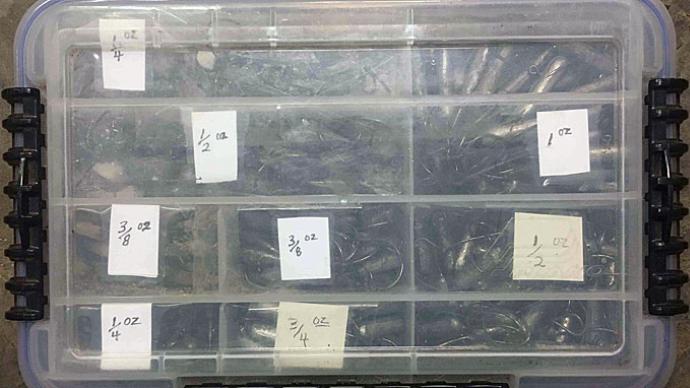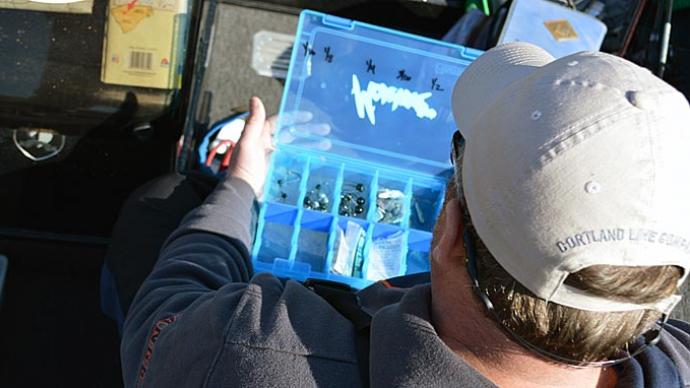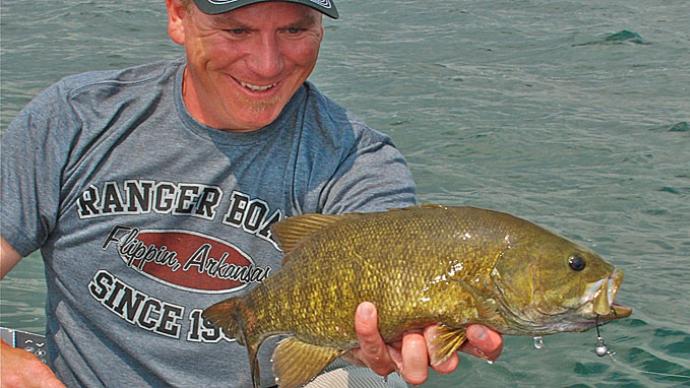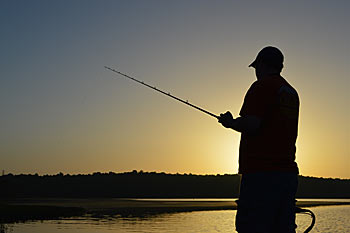
Whether your bass fishing is a year-round pursuit or suspended by winter ice and snow, the arrival of early spring marks the end of one fishing season and the beginning of the next. It cleans the slate and renews your sense of adventure.
That makes it the perfect time to put your fishing tackle in order by removing what isn’t working and incorporating lures you want to try. You’ll need time, soul searching, and maybe some new tackle boxes. And it all starts with a plan.
A purpose for each lure
Lures give anglers control over their destiny. Bass seem to bite on every cast when you have the right one tied to your line. Use the wrong one, and trips become frustrating. Tackle organization helps ensure the latter doesn’t happen.
It’s essential to have choices when selecting a lure. You need some for each fishing task, such as crankbaits that dive to different depths. But you don’t want to drown in options. Green pumpkin finesse worms, for example, produce bass under all conditions. But carrying some in every version — from the chartreuse tail through every color of flake — will cost fishing time in the end, as you sort through them, deciding which to use. The more critical decisions almost always involve where and how to fish under given conditions.
Choosing the lures you carry — and those you don’t — should be based on your review of last season. Note the lures and techniques that consistently caught bass for you. Don’t dismiss those that fizzled or you had lures for and didn’t implement. Also, think about the cover and structure you encountered. While this exercise offers the chance to recall great memories, the information you compile builds the framework for your lure organization.
Keep building your plan by looking forward. Start with the waters you plan to fish, from the small lake close enough to home for weeknight trips to the far-flung bucket list destination you’re finally fishing. Detail the structure, cover, and species of bass in each.
Lures are tools, so knowing what worked and what you’ll face is the first step to deciding which lures you’ll need. For example, if you won’t be fishing any deep-water ledge lakes in the coming year, there’s no need to carry deep-diving crankbaits. But if most lakes are natural with lush aquatic vegetation, one tackle box of frogs might not be enough.
Don’t drill too far into specifics. You only need to know that square bill crankbaits, for example, are the best lures on the lake you fish most often. Getting caught up in exact colors or sizes, at this point, only adds confusion.
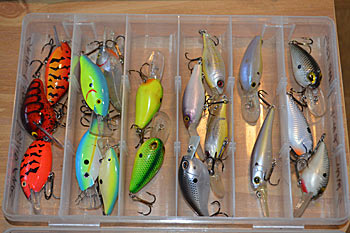
Make it modular
Most anglers have two groups of lures: those that they carry to the lake, reservoir, or river and the lures that stay at home. Both should be organized the same way. That way, as conditions and the waters you fish change, needed tackle can be added, and what you don’t need can be returned to storage.
Your lure selection should be fluid, following seasonal and location changes. For example, when the water temperature is in the 40s, you’ll want more jerkbaits and fewer frogs. The easiest way is with a modular tackle storage system that uses similar containers that can be easily swapped out of your boat or tackle bag.
Hard baits require boxes such as Plano’s utility boxes or Flambeau’s Tuff Tainer boxes. They come in various sizes; some are designed for specific lures such as spinnerbaits. Most have dividers to customize compartment sizes to your tackle.
Limit each box to one type of lure, such as crankbaits, topwaters, or jigs. Then, within each box, organized by the color — natural, dark and bright. If you have a favorite oddball color, set a single compartment aside for it.
Plenty of bags and binders are on the market for storing soft-plastic lures. But an easy and affordable option is 1-gallon resealable plastic bags, which are watertight when closed. Their contents can be seen no matter how they are stowed. That makes finding what you need easier than with other bags, that you may have to fumble even to find a label…especially if there are more than one of the same kind. Dedicate at least one to each style of soft-plastic lure.
You need to be ready for the “unknowns” you encounter while fishing, so make room for a catch-all box in your boat or bag. Here, you can keep a potpourri of lures. In this box, include a new one you want to try and one of something that just might work if the conditions get right. That way, you can feel prepared while leaving the rest at home.
Out with the old
It’s hard to buy just one crankbait or bag of soft-plastic worms. That also goes for spinnerbaits, hooks, and everything else that catches your eye while browsing the aisles or website of your favorite tackle shop. If it works and you lose it, the reasoning goes, you’ll be glad you purchased more. And as easy as it is to buy new tackle, it’s even easier to hoard lures, including those that haven’t caught a bass or even gotten wet. This leads to a ballooning amount of tackle.
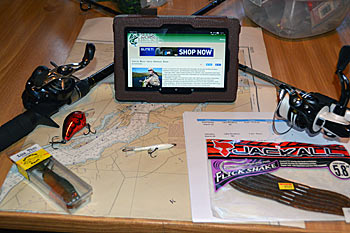
The problem is never too much to tackle. It’s lacking direct access to the lure that you need. All these choices can cloud your on-the-water decisions, so instead of noticing changes affecting bass, you’re deciding which hue of chartreuse crankbait to tie next. You must cull down to the lures that work best in your fishing situations. Here is where this system shines brightest.
Go through your lures, removing those that weren’t used or didn’t catch bass during the previous season. You’ll have to decide where these lures go. Some might be damaged and go straight into the trash. Those with many favorite lures or who have caught bass in the distant past can be stored at home. If you’re working on reducing the number of lures, consider passing some along to a young angler.
You’ll benefit from more than better decisions by carrying less tackle. It’s easier to pack when bank fishing and reduces clutter in your boat, which will run faster and burn less fuel while carrying less weight.
In with the new
Every angler has done it. You make a last-minute trip to the tackle shop before you head to the lake. Those new lures, still in the package or bag, go into your tackle bag or boat. While you might think that’s the fastest way to get fishing, you’ll instantly regret the time you’re wasting unwrapping them at the lake.
Prepare lures for fishing before they go into a tackle box. Inspect the split rings and hooks on hard baits, upgrading them when needed. Trim skirts and shorten or trim the weed guards on your jigs. And, put soft-plastic lures in rigid boxes or transfer them to resealable plastic bags if they didn’t come in one.
Incorporate lures you might need in new places. If you’ve finally scheduled a trip to the Great Lakes for giant smallmouth, fill a box and bag for drop-shotting. Even if it isn’t a technique you use around the home, the modular system allows you to leave it home when not needed.
As sure as bass spawn in the spring, each new fishing season brings at least one must-have new lure or must-try technique. In 2017 that was the Damiki Rig, the small jig head and soft plastic minnow imitator fished vertically for bass schooling in deep, cold water. It’s easy to get caught up in having all the sizes and colors of a new lure, but the reality is that you won’t need them all, at least at first. Pick up dark- and light-colored versions in small and large sizes. The same goes for soft-plastic lures; one bag is the perfect starting amount. It’s easier to expand their place in your arsenal after some results than dealing with an oversupply and no catches.
Keep after it
Your tackle only needs a complete overhaul once a year. Lakes and techniques are constantly changing, so doing so will keep your selection current and ready to produce. But that doesn’t mean you won’t need to keep after it during the season.
Keep lures organized between trips. When you rush to tie on a new hook during a hot bite, for example, and open a new pack instead of finding one you’ve already dipped into, take time later to combine them. Lastly, return the lures you discard in your boat’s cup holders or floors to their boxes after each trip.


